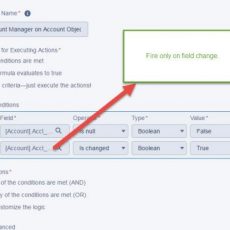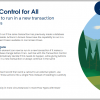Could you tell me how you got started in your IT career and ended up in your current role?
I have always had an interest in IT. While working with sales and sales opportunities, I found myself continually looking at software solutions to business problems. Salesforce was too big for the start-ups that I was working with then, but when I was hired on to a company to manage their operations and support sales, one of the first things I did was recommend Salesforce. It quickly brought structure, direction, and insights into the company. I learned how to use it through working with Trailhead, Communities, Salesforce Support, and the Ohana knowledgebase. I fell in love with solving problems with Salesforce and making the business grow by increasing speed and accuracy. I got my agile and admin certifications and then started looking for a position that was still in products but was enterprise-based to learn that perspective.
What was your childhood dream career, and why?
I wanted to be a vet, as I loved dogs, I still do. I think what I liked about it was helping and giving back if something is a problem, finding a solution, making it better for someone. I ended up in the same place, just doing something different than I imagined.
What is the one habit that you tend to do regularly, which has made you successful in your career?
Goal setting, the Salesforce ecosystem is always changing, and because of that, you need to be learning and working on your skills to meet new challenges with fluidity. Having both professional and personal goals gives you balance. I break my goals down by type and then manage the details with a bullet journal.
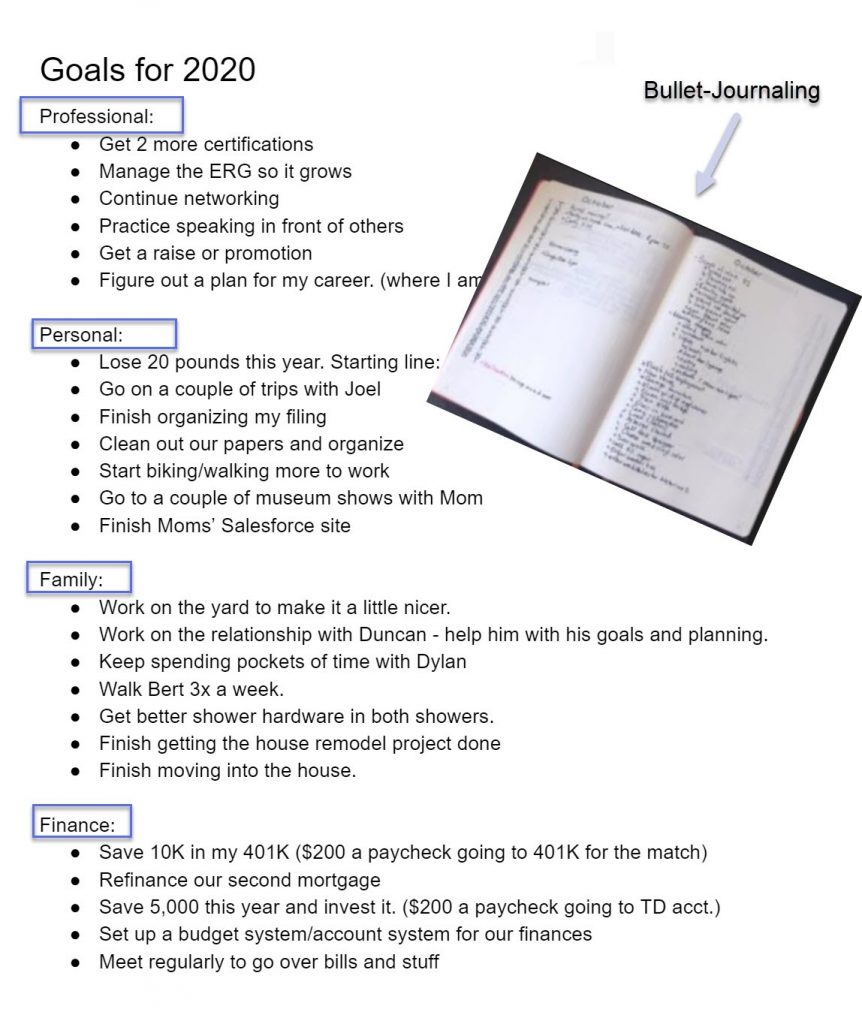
Can you list 2 or 3 points and skills which differentiate you from the others and why companies should hire you for your position?
I am gritty and a creative problem-solver. I don’t give up until I solve a problem. One problem that I could not solve led entirely to me doing the Einstein Vision project 2 years later. It was a solution I knew I had wanted to resolve from before. The best part about it was the knowledge and experience I received by not giving up.
My creative-problem solving comes into play because I have had experience working in many department types from office management to finance, sales, operations, production, customer service, and even transportation. All these different work experiences have given me a comprehensive view of how a company works, and I can bring that understanding to the table when I work on a solution.
What is your strategy to learn new skills and keep yourself updated on your job?
If I know I need more experience in an area or for a software program or with a skill, I write it down, then I add to my to-do list. The skills that I use every day I work on immediately, which supplement and provide opportunities for my quarterly or annual goals. Over time I can make progress and move forward. I create goals by category every year, then do bullet journalling to support day to day action items.
Can you talk about your Einstein Vision project on why you guys considered Einstein Vision for your needs and what business results it achieved for your company?
We needed Einstein Vision because we needed a way to see our product in our stores. We had placement arrangements contracts called planograms – where the store agreed to put the product in a specific place. We had a third party going in and doing the merchandising and taking a photo of the product then forward it to the sales team. Matching up the information so that it was accurate, immediate, and actionable was difficult. We had an off-shore team going through all the thousands of photos each day, confirming accuracy. There would always be a lag, as you had one group submitting through an interview system called Youreka, then we had another group spot-checking. The delay, human errors, and quality of the photos made it hard for territory managers to get a good idea of what was going on. They needed real-time results in a reportable way tied to the account in Salesforce.
We looked at one other company in this area, but the drawbacks were that it was more expensive, it would take more time, and we would not have ownership over some aspects through their software license. Einstein Vision was the better choice as it was more reasonable in cost. We could spin it up ourselves. We would own all the data, making it easier to pivot and adjust the ML(machine learning) model over time as our needs business changed. Like many of the Salesforce apps, Einstein Vision is designed to work on their platform, so rather than configure something big, sometimes the best solutions are the most efficient ones.
The project’s result increased our accuracy of knowing what was on the shelf into a range of 96 – 99%. It saved tens of thousands of hours, a lot of money, and reduced the reporting time from the store interview to the rep.
Can you tell me two specific obstacles or challenges you faced during this project and how you overcame it?
Two obstacles that we overcame were increasing our object detection accuracy and the ability to identify across a range of photos. When we first started the model, we had a problem because some of the products were very similar, except for a slightly different color shade and some wording on the package. The closeness in similarities made the model think that two of the products were the same, rather than different.
To overcome both issues, we did the following:
- We increased our samples and the range of quality of vectored images for each item. Initially, we had between 25-75 vectored photo samples. We had to increase it from under a hundred to over one thousand. The recommended amount is 1000 by the EV team, but you have to assume that some images will drop out, so you need to plan for more.
- You have to have the same amount of each vector sample; otherwise, the ML learning becomes imbalanced. It is a bit like too many people sitting on the side of a boat, causing it to lean dangerously over. This data imbalance is called influence, and it will affect your learning model and skew your data the wrong way.
- ML relies on unique identifiers to tell the difference between two things. We focused on teaching that model the difference between the two products by focusing on the color and wording to recognize the differences.
Combining these things allowed the model to learn what the differences were and then give us back the accuracy we were looking for.
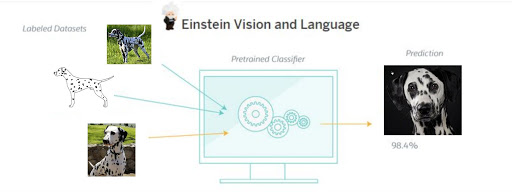
Can you tell me 1 or 2 examples of things you would advise people who are implementing a similar project using Einstein Vision to be prepared for in advance, which would save them a lot of time before?
You need to have an ML plan laid out, determine what you are going to train on the model and what your goal will be. It is essential to make this an iterative operational process as your work moves forward so you can continually re-evaluate and improve on it. My team sent me to Google to take a class on machine learning. I brought back all the knowledge I gained and helped to turn it into a process plan for the project.
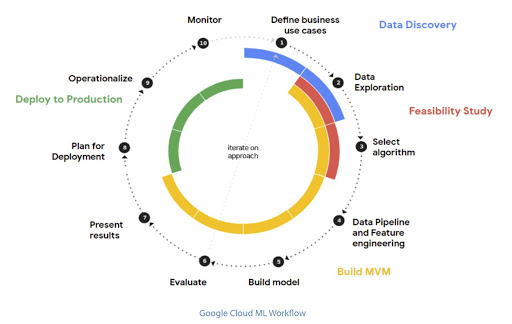
The second would be to have a broad range of photos of what you want the project to identify; you will probably need a couple of thousand samples to start with for each product to train the model otherwise, you will have a hard time telling the difference between a muffin and a chihuahua.

Did you get involved in creating or updating the Einstein Model?
EV gives you a base model to customize and use with their software. We took their base model and trained it to recognize our products and connected it to Salesforce Sales.
5. How difficult is it to customize, and what learning lessons did you learn, which would help others during an implementation?
In some ways, it was simple in its design and others; it needed configuration and integration with other software. The best first step that we did was map out our schema and identify how we needed to build everything. The learning lesson we had was to work with the results, and quantify what we were doing, testing at each stage to make sure we were on track.
6. Can you list 1 or 2 use cases or scenarios where vision may not be the right choice?
Einstein Vision will not be the right choice if you do not have an operational way of getting the photos fed into your system. It would be essential to know your goal for the project, like placement compliance or increasing orders, generating business for a specific market channel or product.
If you want to advise students who are looking for a Salesforce career or people who want to shift their career to IT like sales, marketing folks on Salesforce products as an example, What would be the 2 or 3 things you would advise them to follow now to get a job quickly?
In these times, getting a job quickly is a misnomer. It sets up people for expectations that a salesforce job will be handed to them once they get certified. The best thing to do is to start on Trailhead and get your certification. Use your current strengths and deepen those to capitalize on what you already know and turn it into actionable solutions.
If you are interested in Salesforce, see if your company has a Salesforce department and let them know you are training on it and want to develop a career in that direction.
Taking the extra time to learn will pay off over time; it is like putting spare change away for savings. At the end of the year, you have something extra that will pay for something you want.
If you contribute to a non-profit or a cause that is dear to you, can you talk about a few words on the activities they do and how people can donate or contribute to it?
I am a big supporter of Women In Tech and the Salesforce Ohana. Many people reached out to help me in my career to become a Salesforce Admin. Their encouragement, whether it was a hug, a phone number, or their LinkedIn contact, gives me confidence, it means the world to me, and I help other women in return. At Juul, I co-founded a Women In STEM ERG. Currently, I am a member of Women in Tech Republic. Reach out and help other women be a part of the Salesforce Ohana.
I want to thank Jenn for her valuable time she spent on the interview with me. Please feel free to post your comments below or you can contact Jenn on her Bio or email me at buyan@eigenx.com for further questions.
Please subscribe
Subscribe to our mailing list and get tips to maximize salesforce to your email inbox.
I am honored to have your subscription. Stay tuned for tips to maximize your salesforce investment
Something went wrong.
